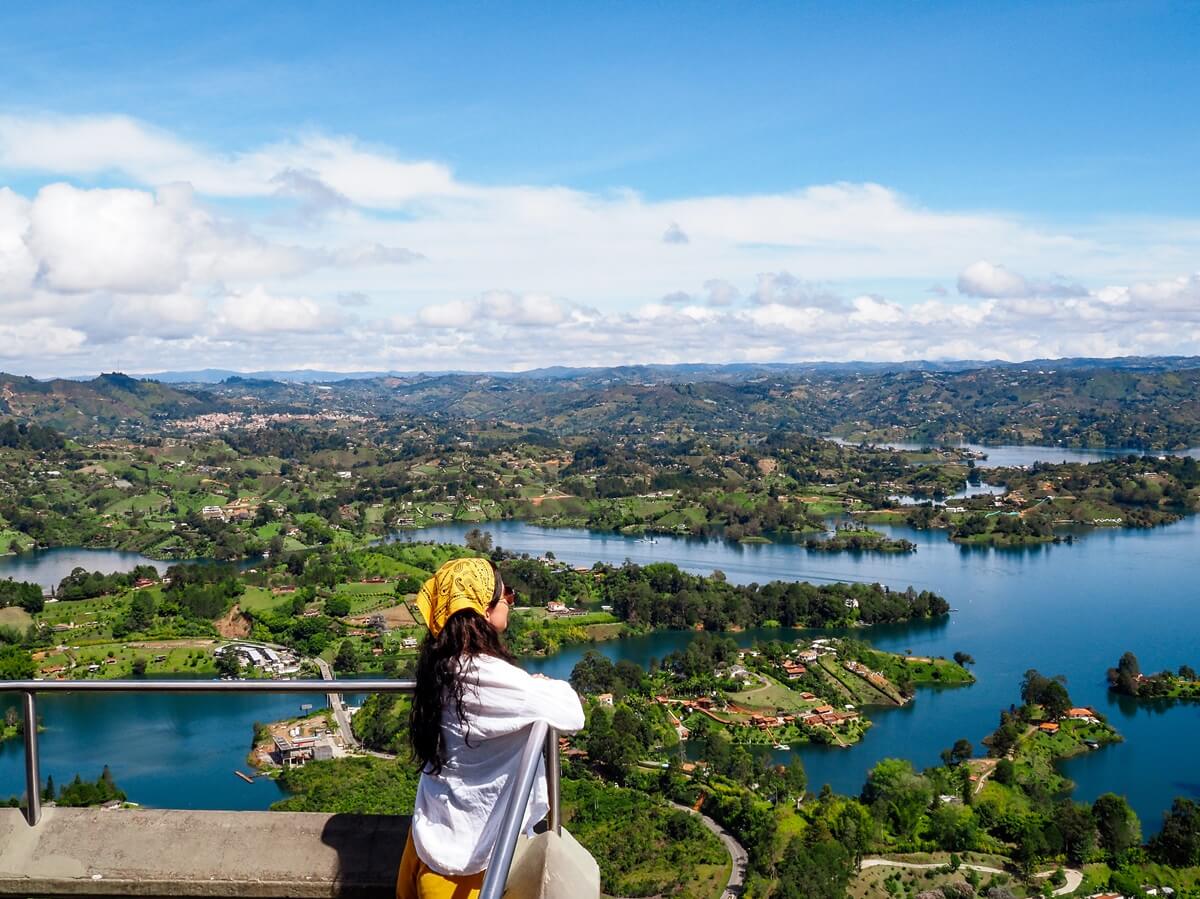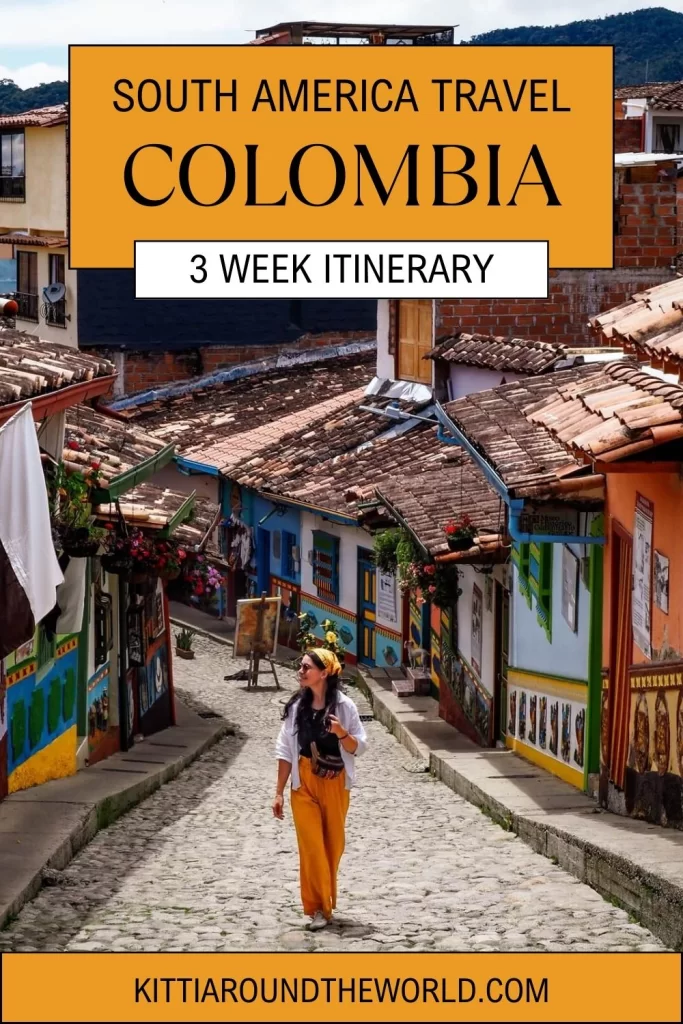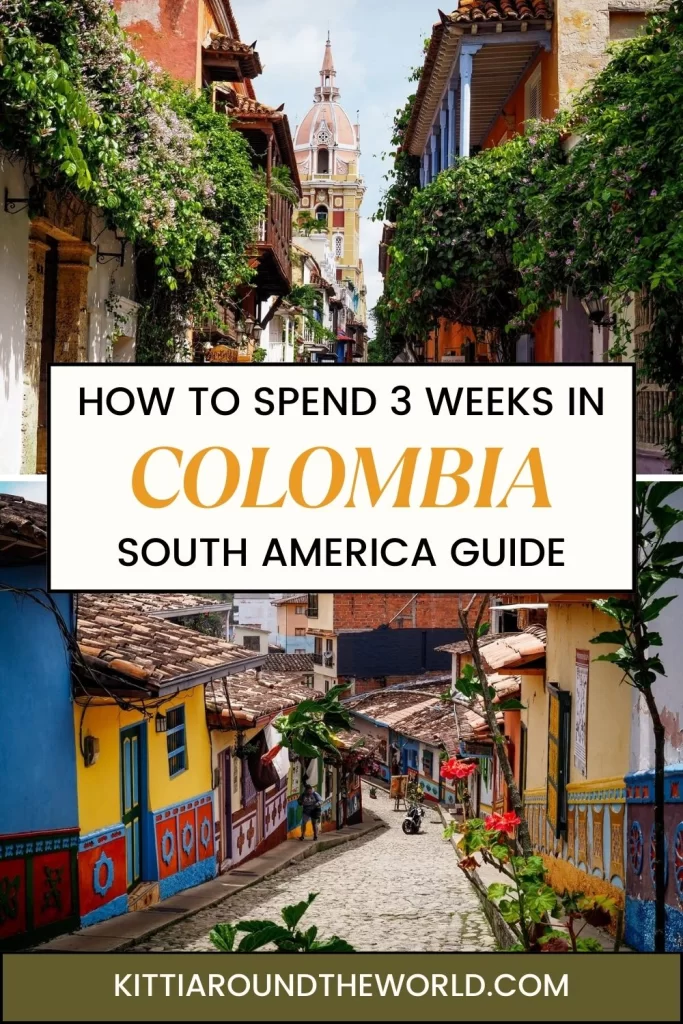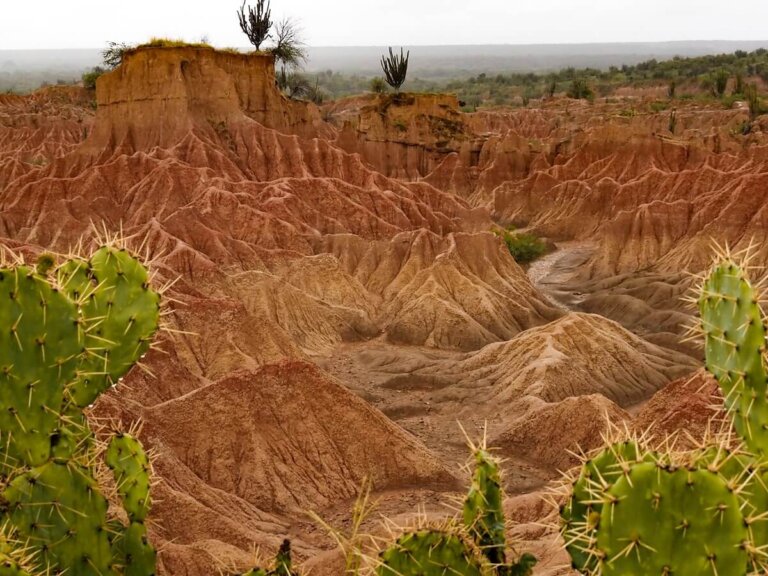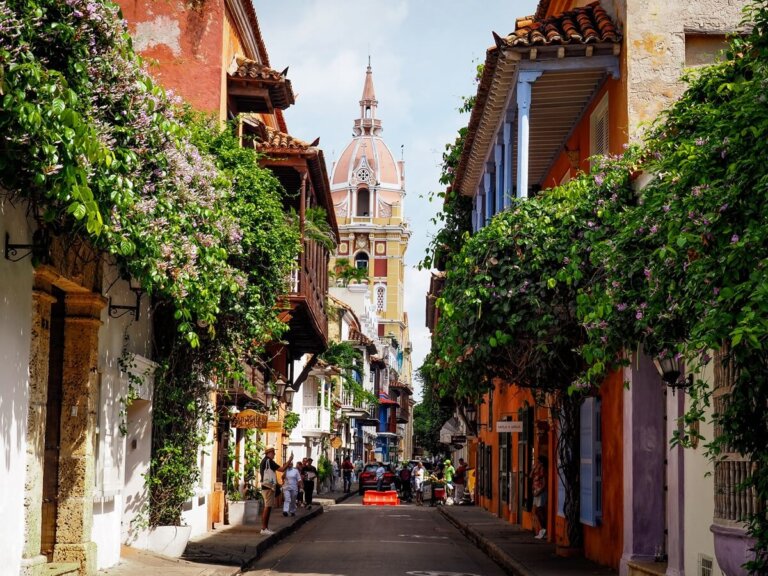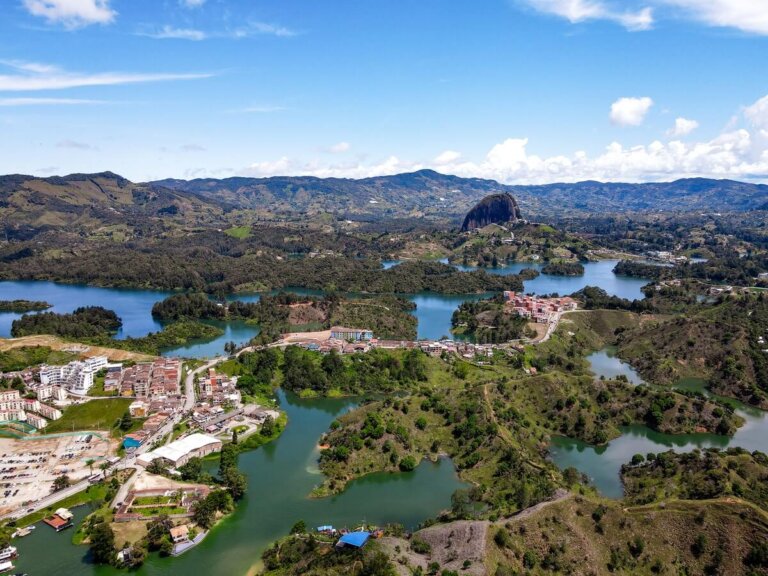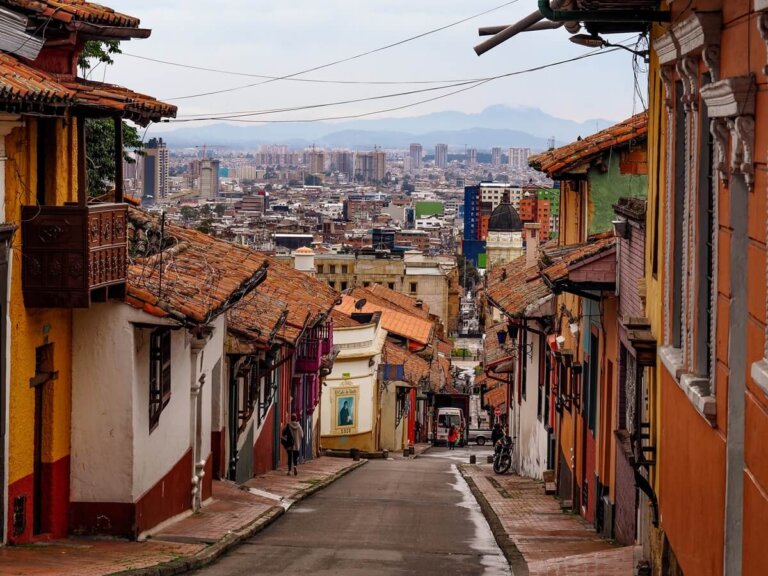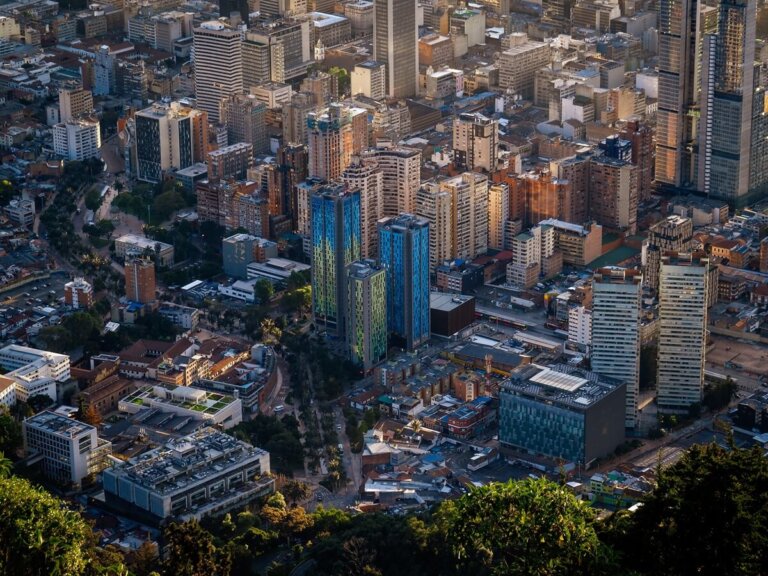3 Week Colombia Itinerary – How to Plan a Trip to Colombia
Colombia is becoming a very popular country to visit in South America. It’s home to a fantastic mix of natural and urban attractions. From its bustling and colourful cities, such as Medellin and Bogota, to the picture perfect towns of Guatape and Salento, there are no shortage of urban areas to explore in Colombia. There’s also plenty of sandy beaches along the Caribbean coast, like the ones on the Rosario Islands or in Tayrona National Park. Incredible natural landmarks, such as the Cocora Valley, Piedra del Peñol and the Tatacoa Desert, are also worth exploring on a day trip.
As you can see, there’s something for everyone here, so it’s no wonder that Colombia is starting to appear on more and more people’s bucket lists these days. We hope that our 3 week Colombia itinerary will help you to plan your unforgettable adventure.
We also documented all of our adventures on YouTube where you can now watch the entire Colombia Series for some visual inspiration.
Disclosure: This post may contain affiliate links, which means we may receive a small commission if you click a link and purchase something. Clicking these links won’t cost you anything, but it will help us to keep this site up and running! Learn more about our affiliate policy.
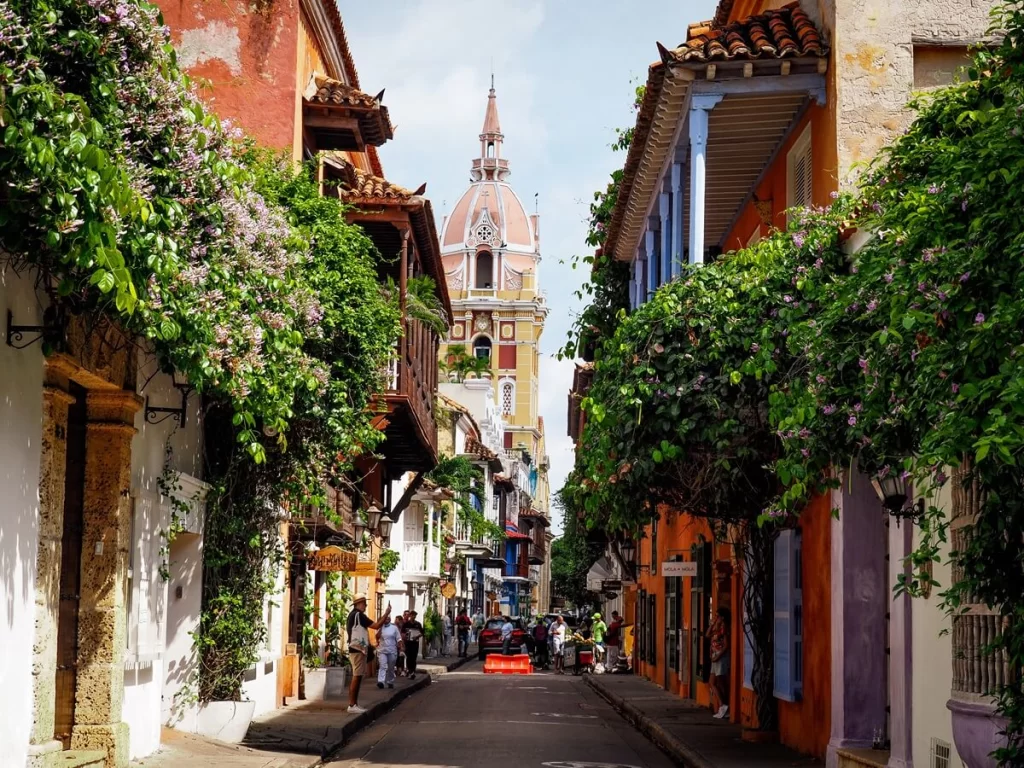
How to Start Planning Your 3 Week Colombia Itinerary
We totally appreciate that Colombia is a large and diverse country, filled with endless places to visit. So, if you’re short on time, it can be tricky to cram everything in.
Below we’ve highlighted a few points that you should consider as you’re planning your trip:
Step 1: Entry and Exit Points in Colombia
The way we suggest starting to plan your 3 week Colombia itinerary is to know your entry and exit points from the country. Are you only visiting Colombia on this occasion and flying in and out of Bogota? Or are you on a backpacking trip across South America? This means you might be crossing the land borders from Ecuador. If so, your itinerary might be slightly different and you could start from one end of the country and exit at the other.
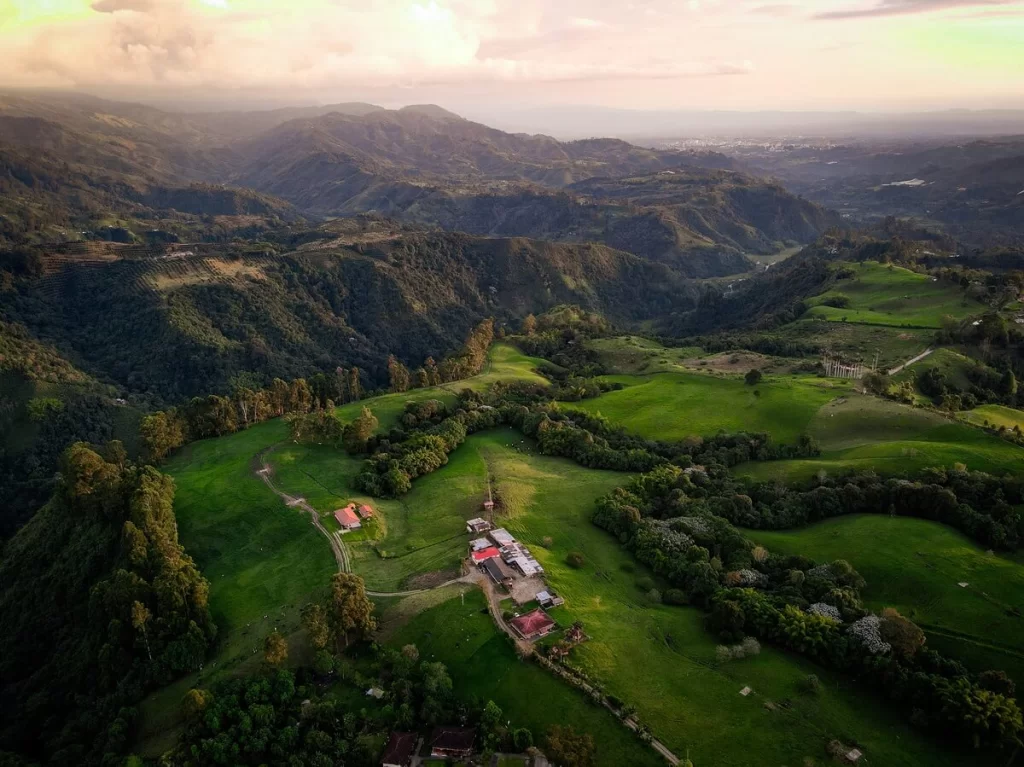
Step 2: Your Personal Interests
It’s also important to think about your interests. Do you want to spend some time on the beach or are you more interested in hiking? Would you like to get off the beaten path, or would you much rather just wander the streets of a city? Do you want to learn about history, culture and try some of the best Colombian foods or do you just want to see some of the country’s natural beauty and wildlife?
Once you know the answer to these questions, then it’ll be a lot easier to figure out your 3 week Colombia itinerary.

Step 3: Method of Transport in Colombia
Lastly, don’t forget that Colombia is a big country. This means that travel distances are much greater than anywhere in Europe, for example. Therefore, it’s good to decide how you’d like to get from A to B and check what viable options there are.
Flying to certain places in Colombia is definitely the fastest method. However, it is more expensive and also not the most environmentally friendly way to travel. There are also some popular places that you can’t reach by flying. You’d have to fly to the closest city, then take another method of transport from there.
Whilst driving gives you more freedom and also allows you to access some off-the-beaten path destinations, driving in Colombia looked a bit frantic. Renting a car might be a great option for short trips, but we personally wouldn’t choose to travel across the country in a hire car.
Travelling by bus is a common method of transport and you can reach most places in the country this way. Buses are also affordable and a great way to see more of the countryside.
Read More: A Guide to Bus Travel in Colombia
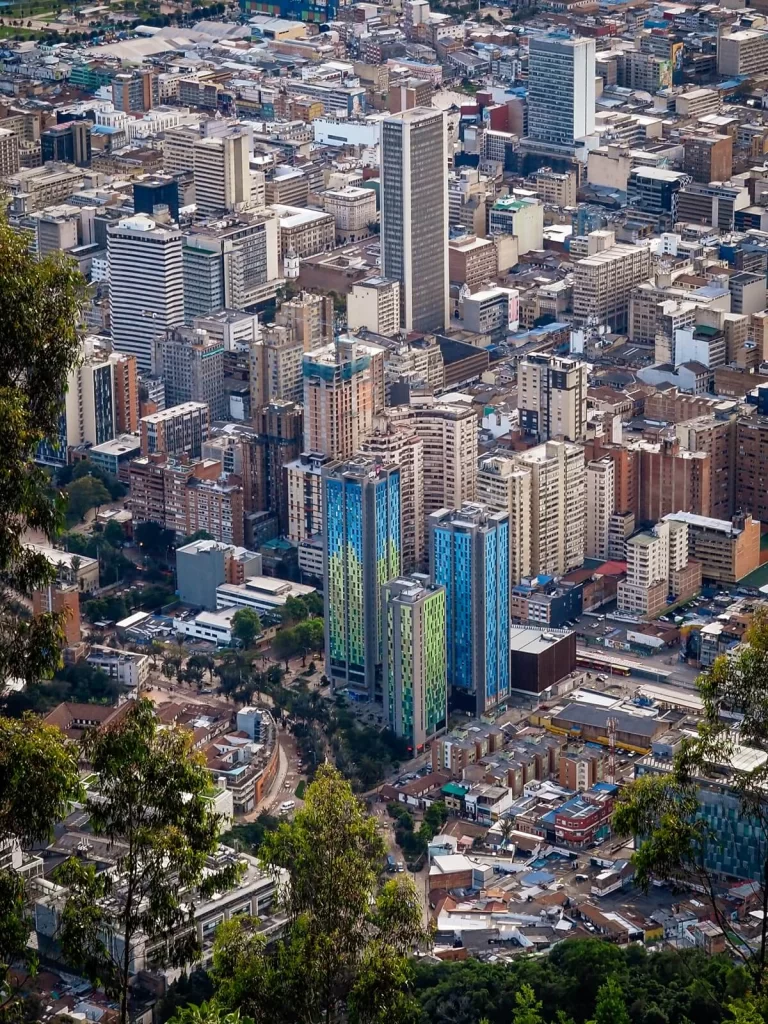
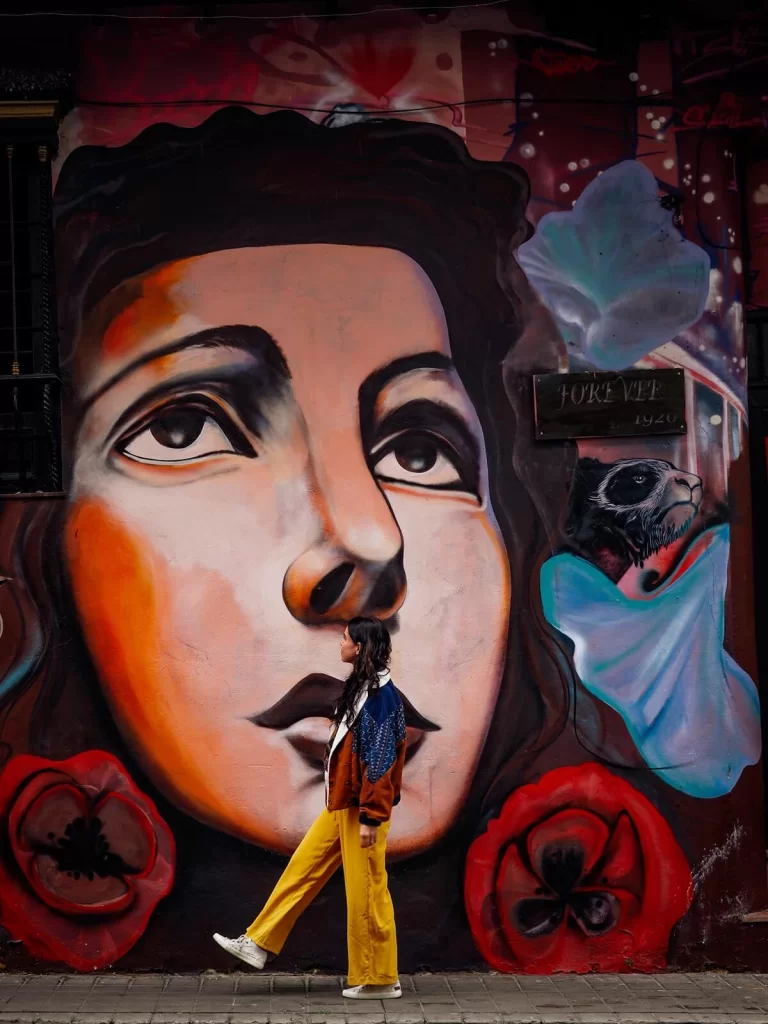
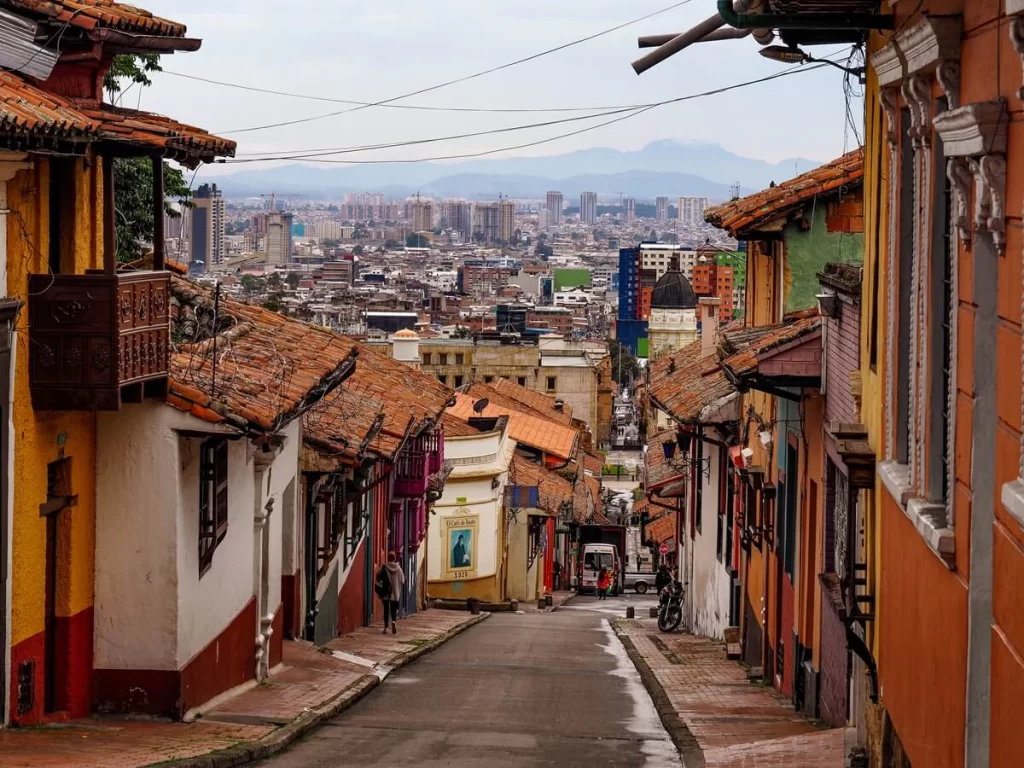
3 Week Colombia Itinerary
Note that this 3 week Colombia itinerary is fully customisable. You can add or skip a destination depending on your interests. We love the outdoors, so we were automatically drawn to places with hiking opportunities. However, if you enjoy other types of destinations, such as beaches, then definitely add those to your own itinerary as well.
We have detailed guides for each location too, which go in-depth on how much time you ideally need in each place. So, make sure to check them out whilst you’re planning.
Day 1-3: Bogota (Explore the Capital of Colombia)
The Colombian capital of Bogota, located around 2,640 meters (8,660 ft) above sea level, is considered one of the world’s highest capital cities along with La Paz, Bolivia and Quito, Ecuador. Bogota is known for its cooler temperatures, vibrant street art, fantastic museums, colonial architecture mixed with modern high-rise buildings, plenty of green spaces and a brilliant food scene.
There are plenty of things to do in the city so it’s best to spare at least 2 full days. You can start by exploring its colourful historic centre, La Candelaria, which has interesting museums, colourful street art and lively plazas.
Possibly the most popular activity to do in Bogota is to visit Cerro de Monserrate. Located at 3,152 m (10,341 ft) above sea level, this hill provides the perfect viewpoint of the city. You can either hike up, take a cable car or ride a funicular. You can also visit the Botanical Garden or take a trip to Usaquén Market on Sundays.
If you have more time, then definitely take a day trip to the Salt Cathedral of Zipaquira (Catedral de Sal de Zipaquirá). Located in the small town of Zipaquira, about 55km to the north of La Candelaria in Bogota, a visit here is definitely more of a day trip than a quick activity.
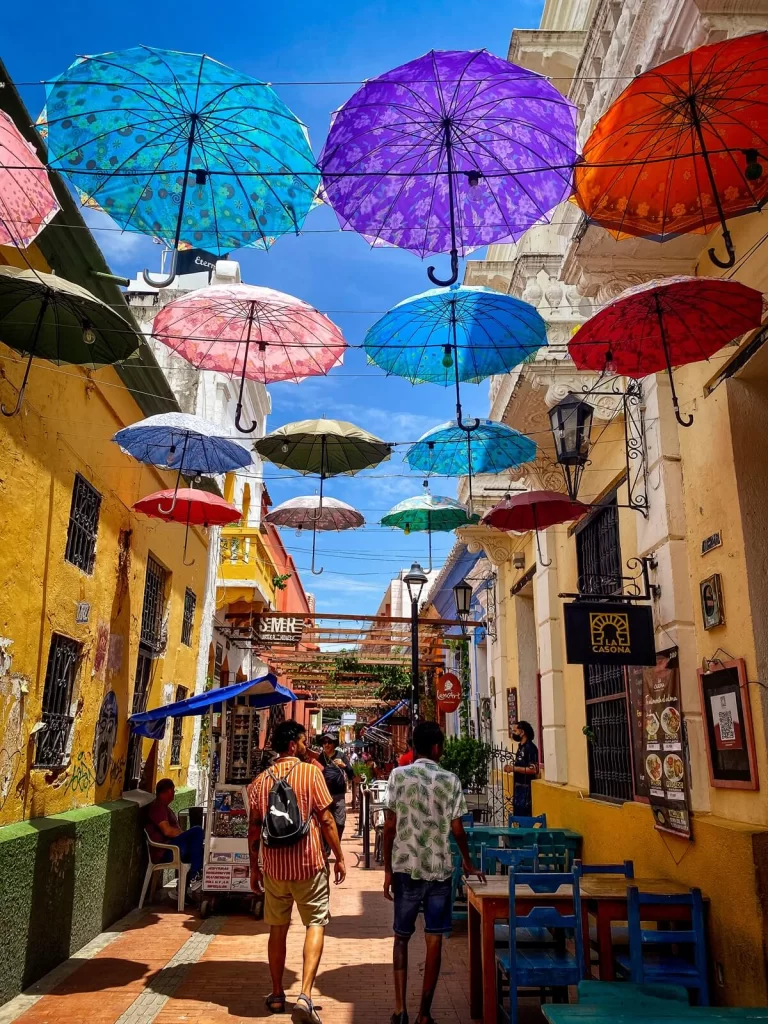

Day 4: Santa Marta (Enjoy the Great Food Scene)
Next on your 3 week Colombia itinerary could be Santa Marta. The city is located along the Caribbean coast and is considered the gateway to the stunning Tayrona National Park. You can also start the Lost City Trek from here.
Santa Marta isn’t going to be the most attractive place you’ll visit in Colombia. However, you can still spend a good half a day walking around its colonial centre. There are a few museums worth visiting, such as the Gold Museum and Simon Bolivar Museum. In the evenings some of the streets become very lively and the city has a pretty good food scene. However, Santa Marta’s beaches aren’t the most inviting, and there are much better places to enjoy sunbathing in Colombia.
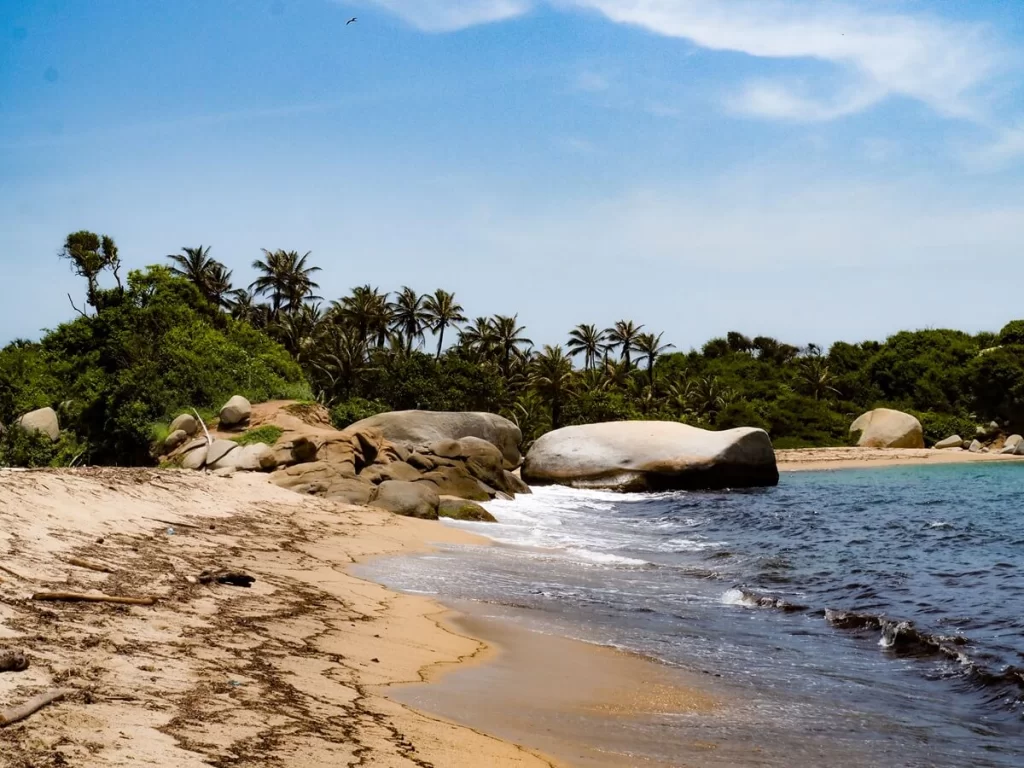
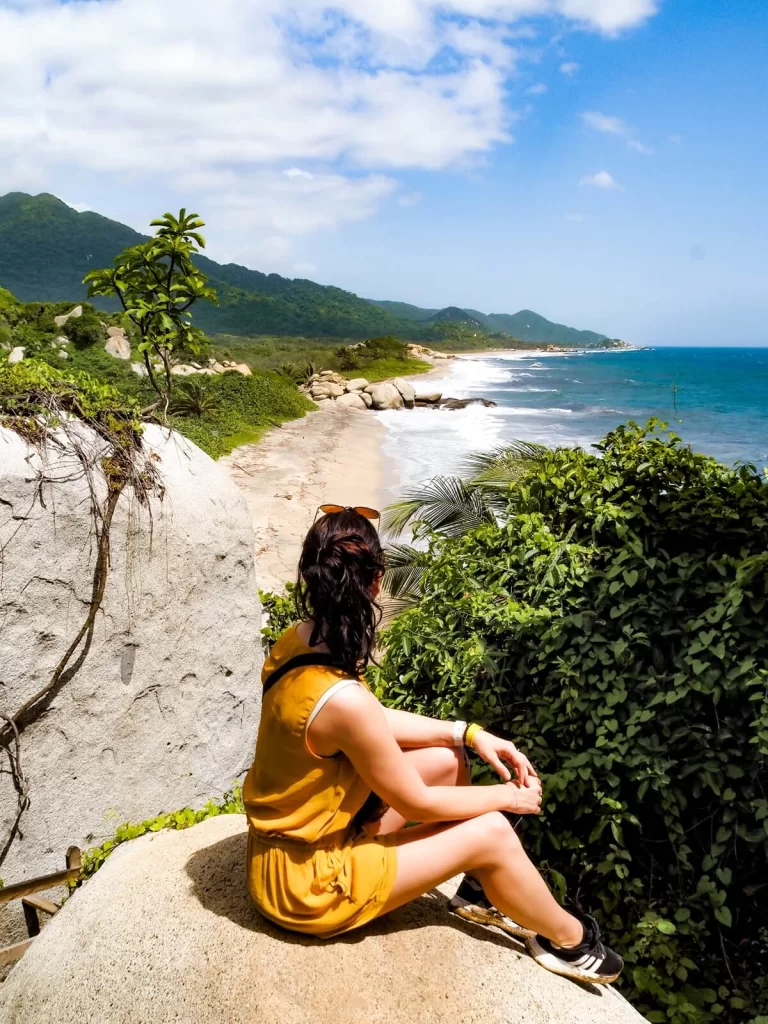
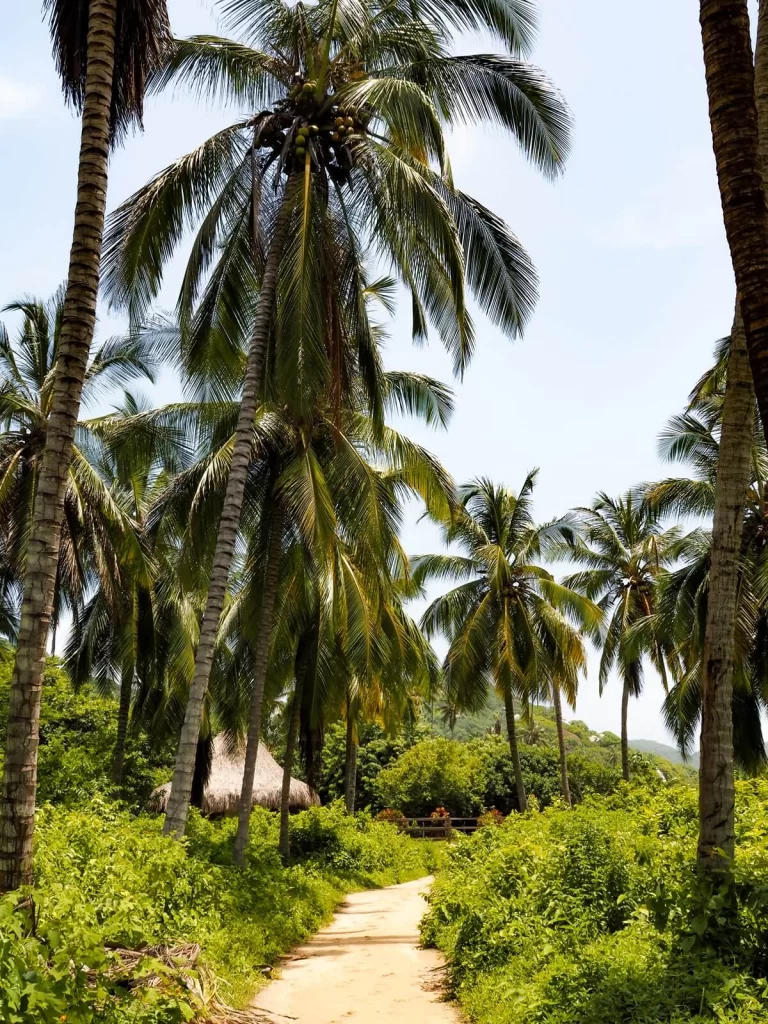
Day 5-6: Tayrona National Park (Relax on Sandy Beaches)
Now, if you’re going all the way to Santa Marta, the chances are that you’re there to visit Tayrona National Park (Parque Tayrona). The park covers an area of 150 square kilometres and includes rainforests, palm trees and, of course, stunning stretches of sandy beaches. It’s probably worth noting that in order to enjoy the beaches you’ll need to hike to them. Hiking in the rainforest can be difficult thanks to the insane heat and humidity; and that’s not mentioning the incredibly muddy trail at certain times of the year. However, jumping into the sea after your hike will be worth the effort.
Whilst you can totally visit Tayrona as a day trip, after our experience we highly recommend spending a night in the park. You’ll be able to complete the hike to the beaches at a much slower pace and also get the chance to enjoy them without having to rush back before closing time. Just be aware that the sleeping arrangements are pretty basic; a hammock essentially.
Note that the park closes for about half a month in February, June and October.
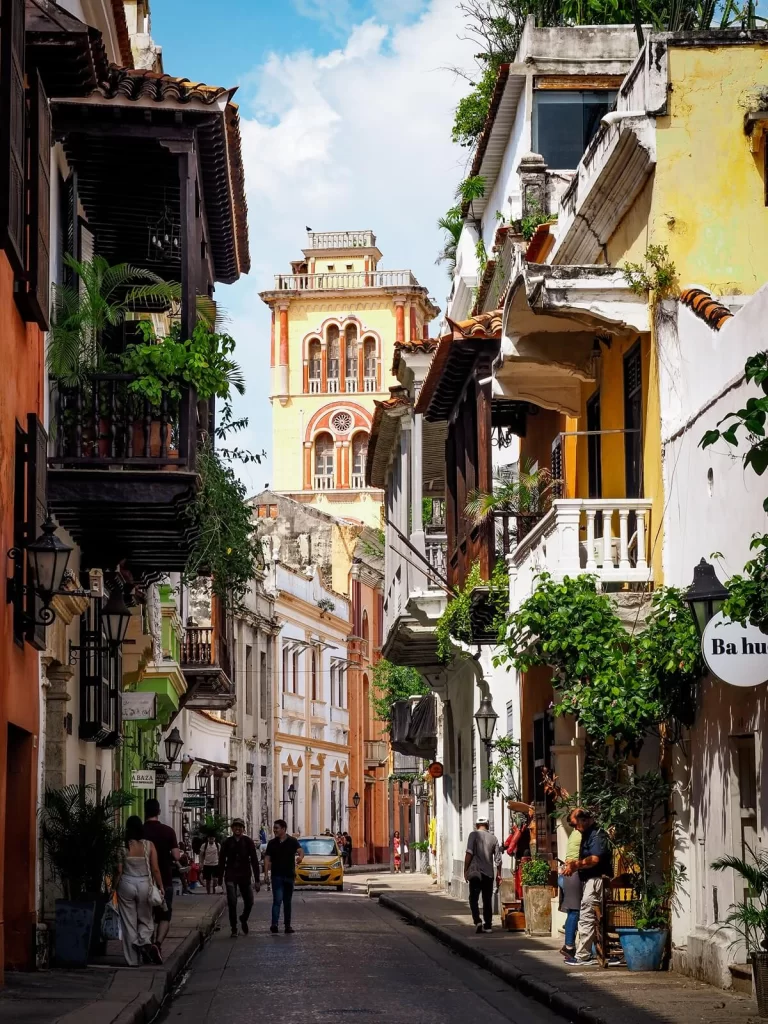

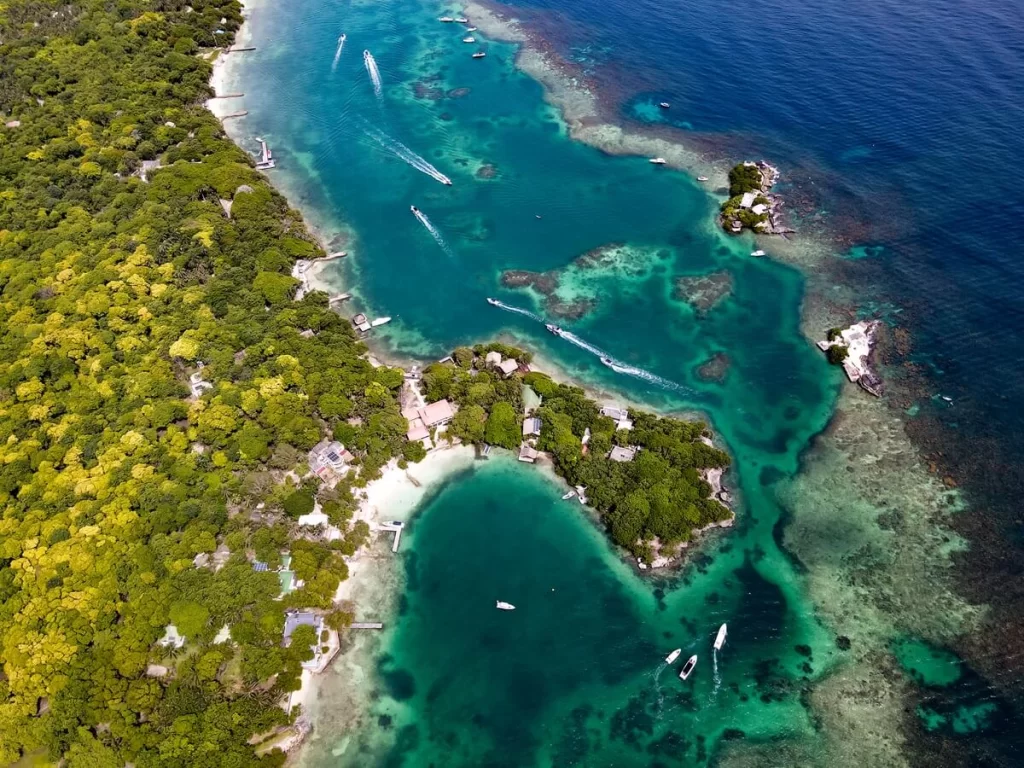
Day 7-9: Cartagena (Explore the Colourful Walled City)
Located on the Caribbean coast of Colombia, Cartagena de Indias is on pretty much every visitor’s Colombia itinerary.
Cartagena is filled with historical buildings, colourful streets, meaningful street art, plenty of cafes, restaurants and unforgettable sunsets. There are also some stunning beaches in the area. The city is a blend of the traditional and modern, which creates a unique atmosphere that makes it one of the most visited places in Colombia.
We recommend spending 3 days in Cartagena. This would allow you to walk around its historic centre, visit a few museums, explore the colourful Getsemani neighbourhood and take a day trip to either Baru Island or the Rosario Islands.

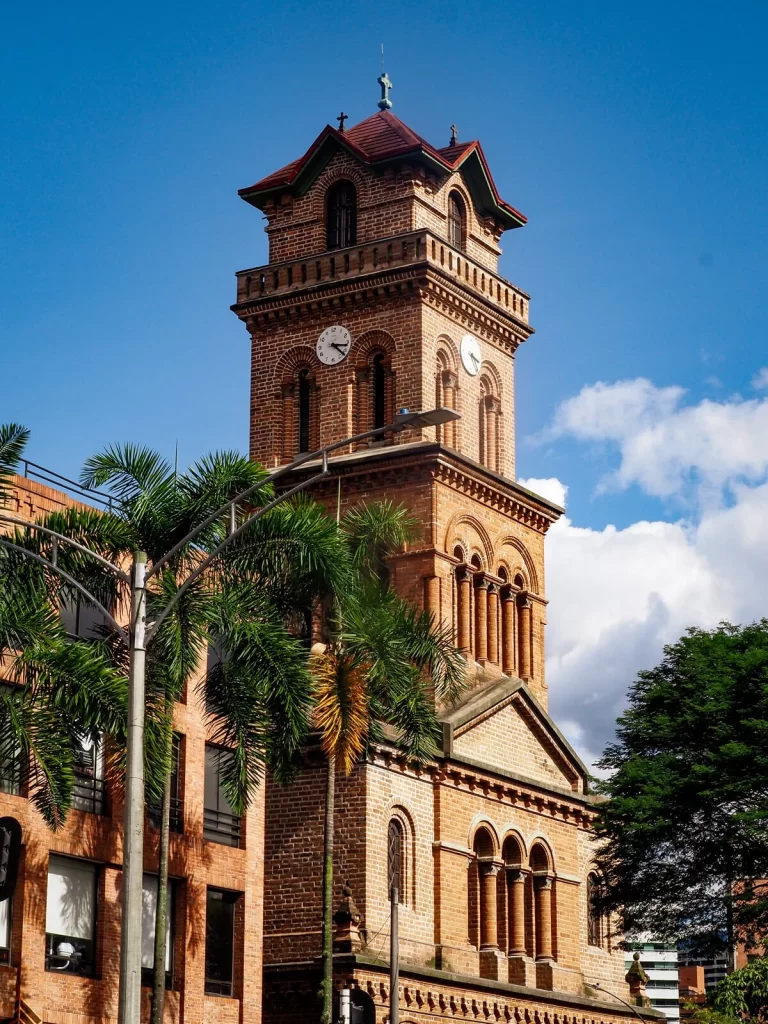
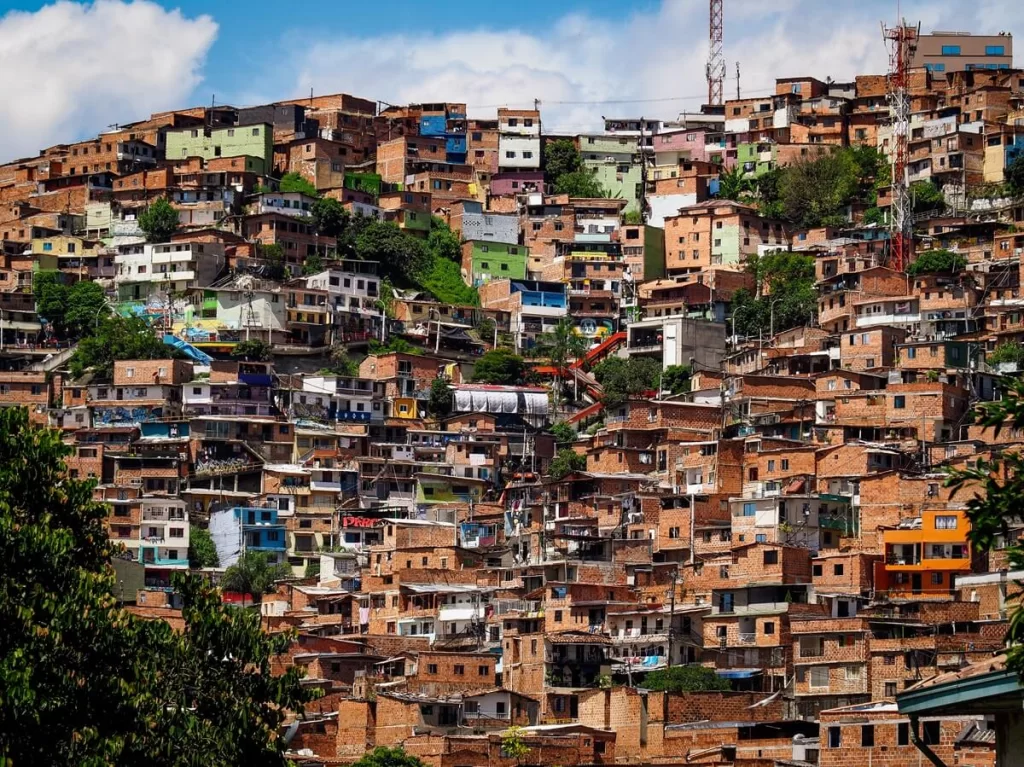
Day 10-11: Medellin (The City of Eternal Spring)
Medellin is located in the Aburrá Valley and is Colombia’s second most populous city. Sitting at an elevation of 1,495 m (4,905 ft) above sea level, it enjoys mild temperatures all year-round. For this reason, Medellin is often referred to as the City of Eternal Spring.
To get a good feel for the city, we recommend spending a minimum of 3 days in Medellin. That way you can take a tour of Comuna 13, visit its historic centre and wander around El Poblado. If you have some additional days to spare, we suggest adding an extra day to your Medellin itinerary. This would allow you to go on a day trip to Parque Arvi.
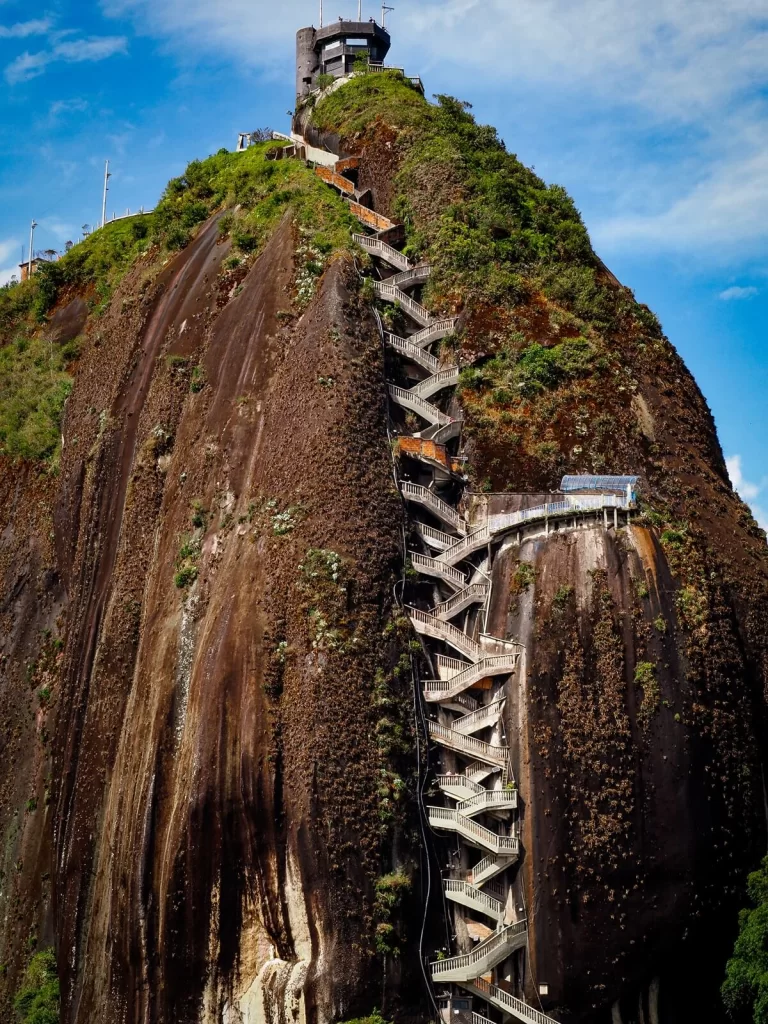
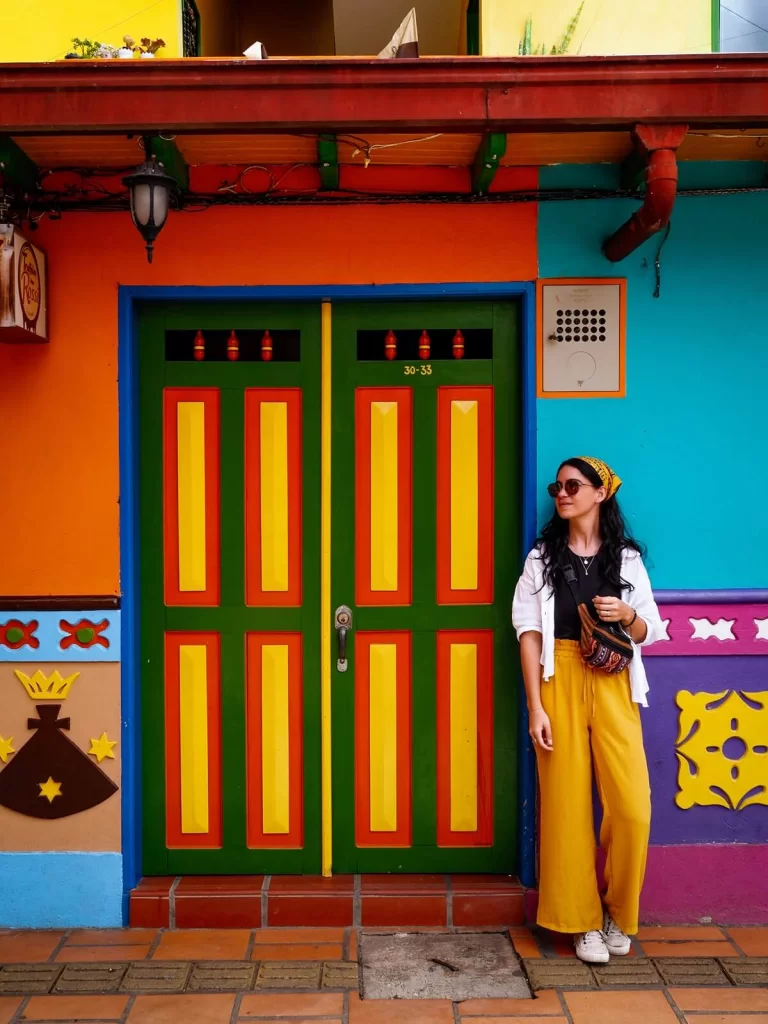
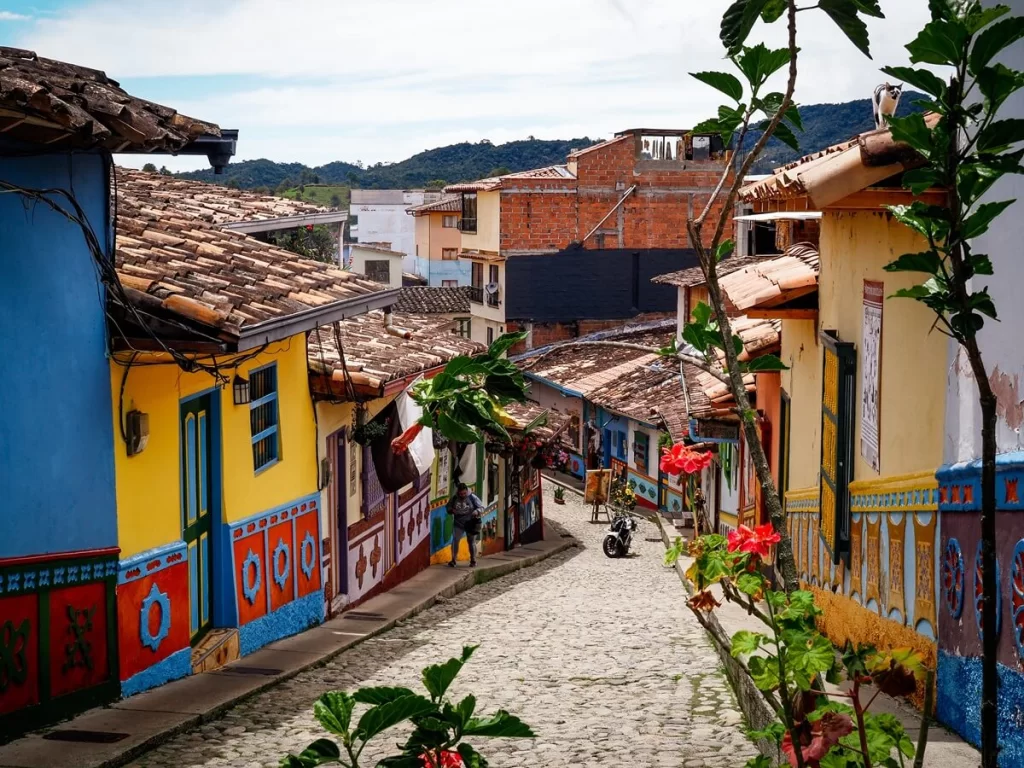
Day 12: Guatape and Piedra del Peñol (Visit the Most Colourful Town)
A day trip to Guatape and Piedra del Peñol should be on your 3 week Colombia itinerary. Located only two hours to the east of Medellin, Guatape is considered one of the most colourful towns in Colombia.
Only a few kilometres from Guatape is La Piedra del Peñol, often just referred to as La Piedra (the Rock), or El Peñol. This massive, 220 m high granite monolith is one of the most iconic landmarks in Colombia.
You can actually climb all the way to the top of El Peñol, which is one of the top things to do in the area. You’ll have to ascend nearly 700 steps, but your efforts will be rewarded with panoramic views of the surrounding landscape.
A day trip from Medellin will be enough to walk around Guatape, climb El Peñol, and fit in a boat trip around the lake too. However, if you have a few extra days, we recommend spending a night in Guatape.
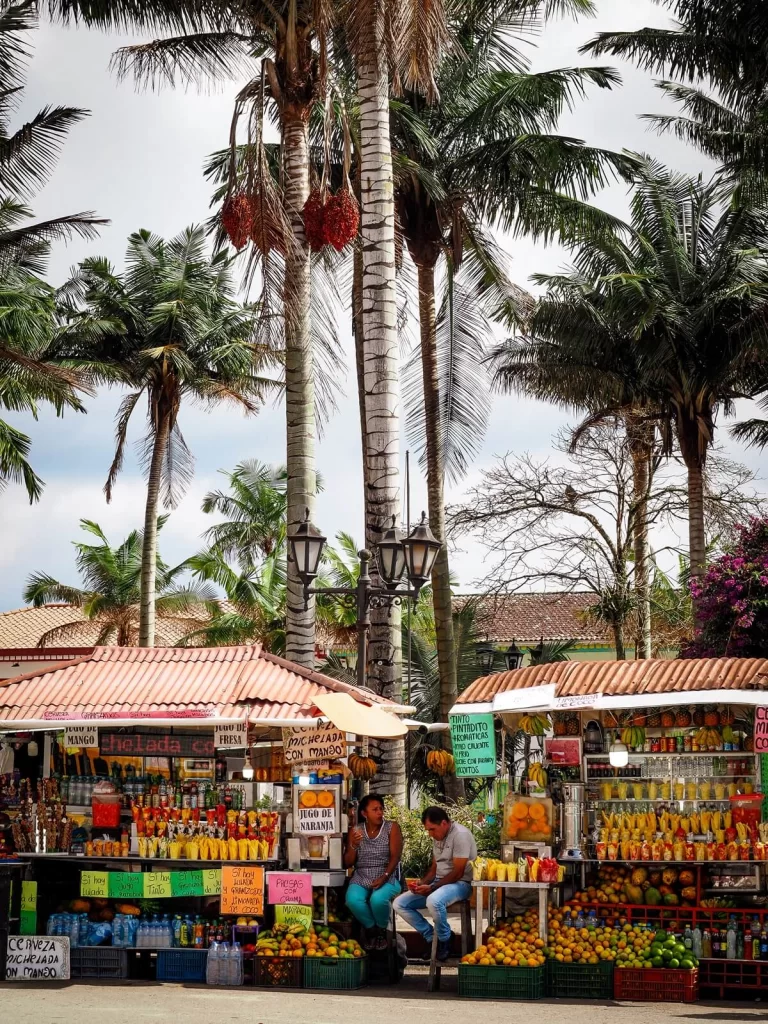
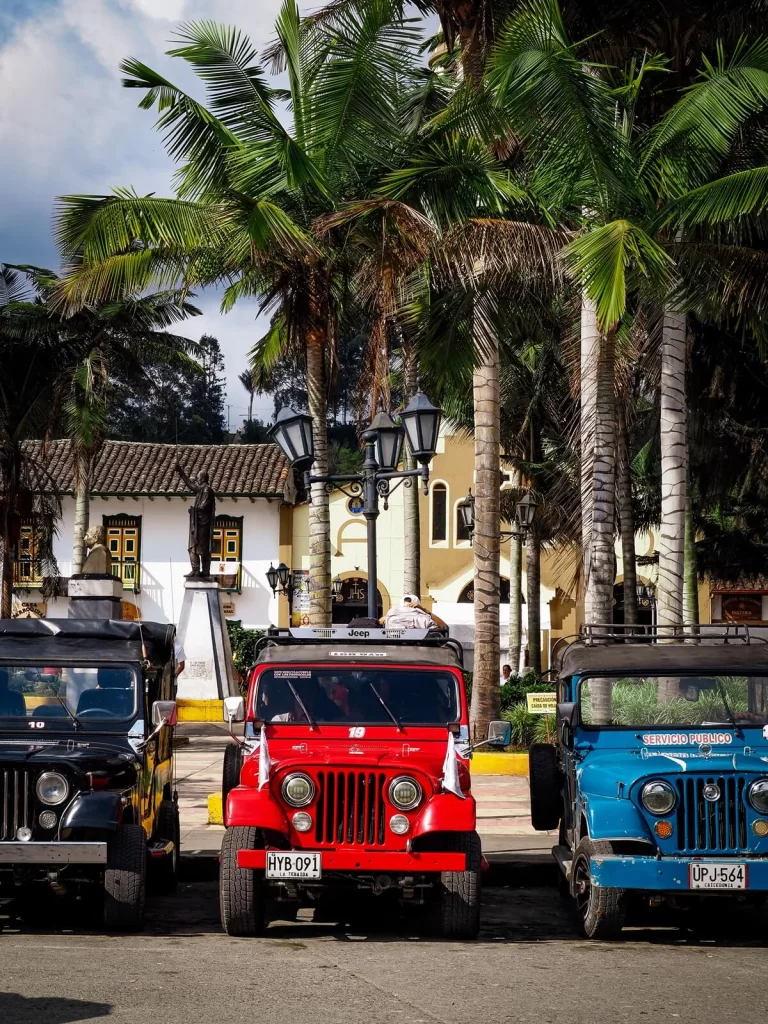
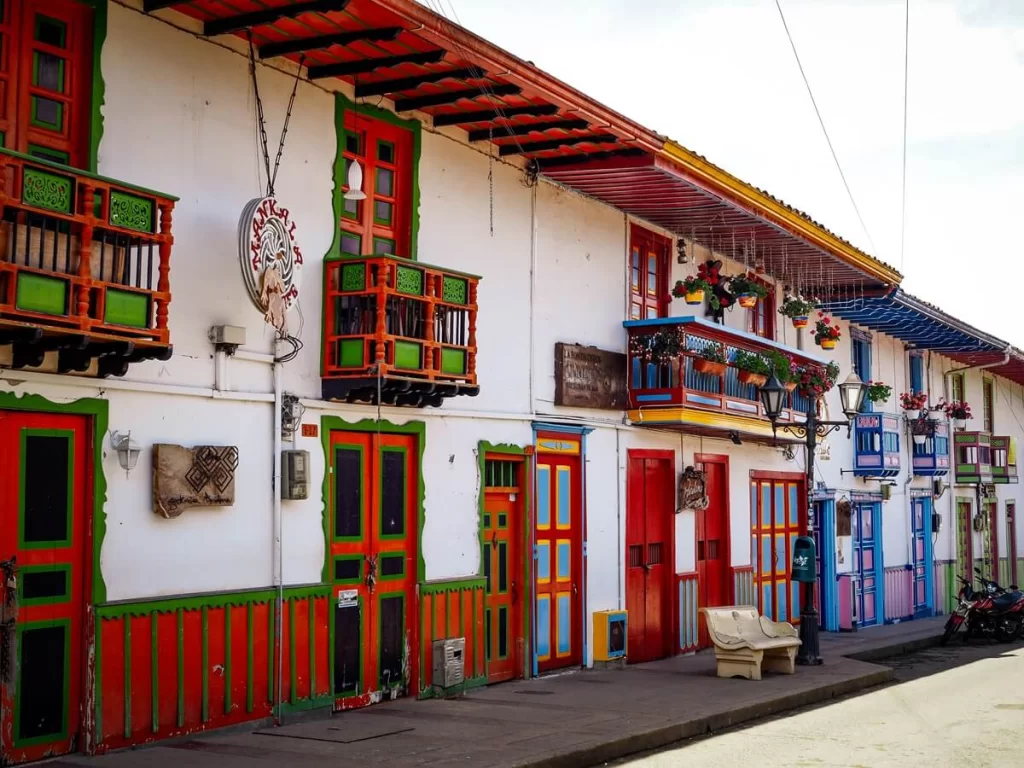
Day 13-14: Salento (Explore the Coffee Triangle of Colombia)
As one of the most popular places within the Coffee Triangle of Colombia, Salento should be on your Colombian itinerary too.
Similar to Guatape, Salento is also one of the most colourful places in Colombia. We recommend allocating at least one full day to see Salento. A day will be enough to see the highlights of the town, such as Calle Real, walking up to the viewpoints, going on a coffee tour and playing a game of Tejo in the evening.
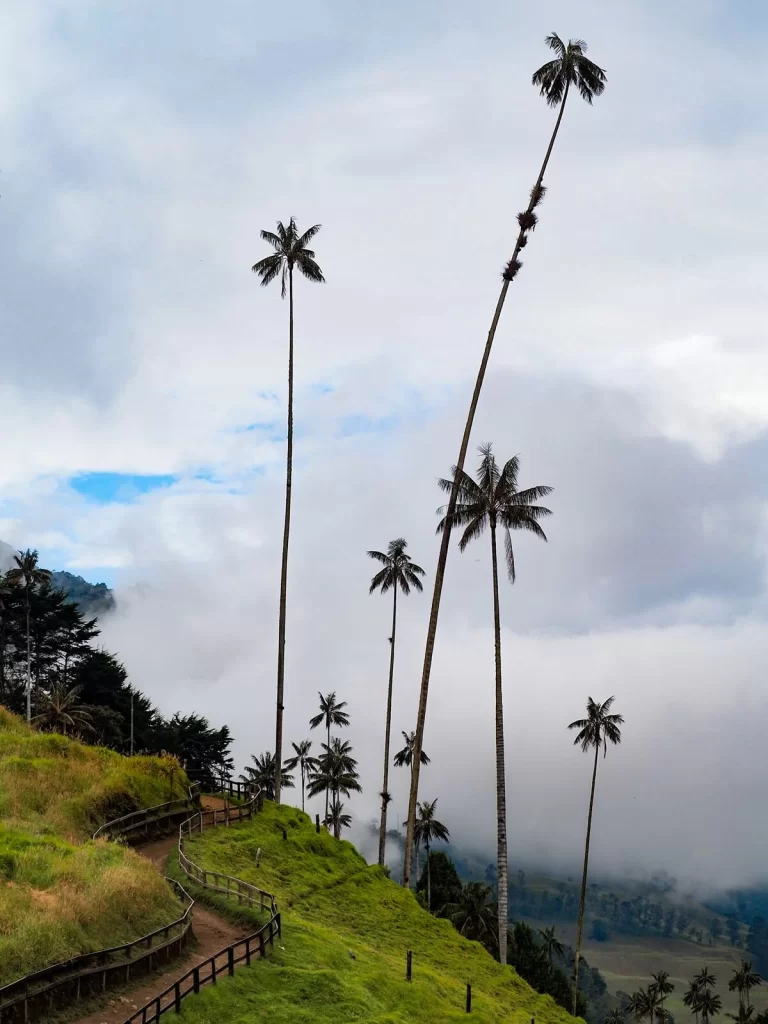

Day 15: Cocora Valley (See the World’s Tallest Palm Trees)
Located a short drive from the colourful town of Salento is the Cocora Valley (Valle de Cocora). It’s part of the Los Nevados National Natural Park and also home to the Quindío Wax Palms which are considered the world’s tallest palm trees. They’re only native to Colombia and some parts of northern Peru.
You can easily get to the Cocora Valley on one of the Willys jeeps leaving from Salento’s main square. Riding on the back of these jeeps is also a very fun activity in itself. Once you’ve reached the Cocora Valley, you can go on a shorter or longer hike depending on how much time you have. The shorter trail only takes you through the most photogenic palm tree section of the valley. However, the longer hike will take you to other, much quieter parts of the park.
We recommend allocating a day to visit the Cocora Valley, especially if you want to do the longer loop.
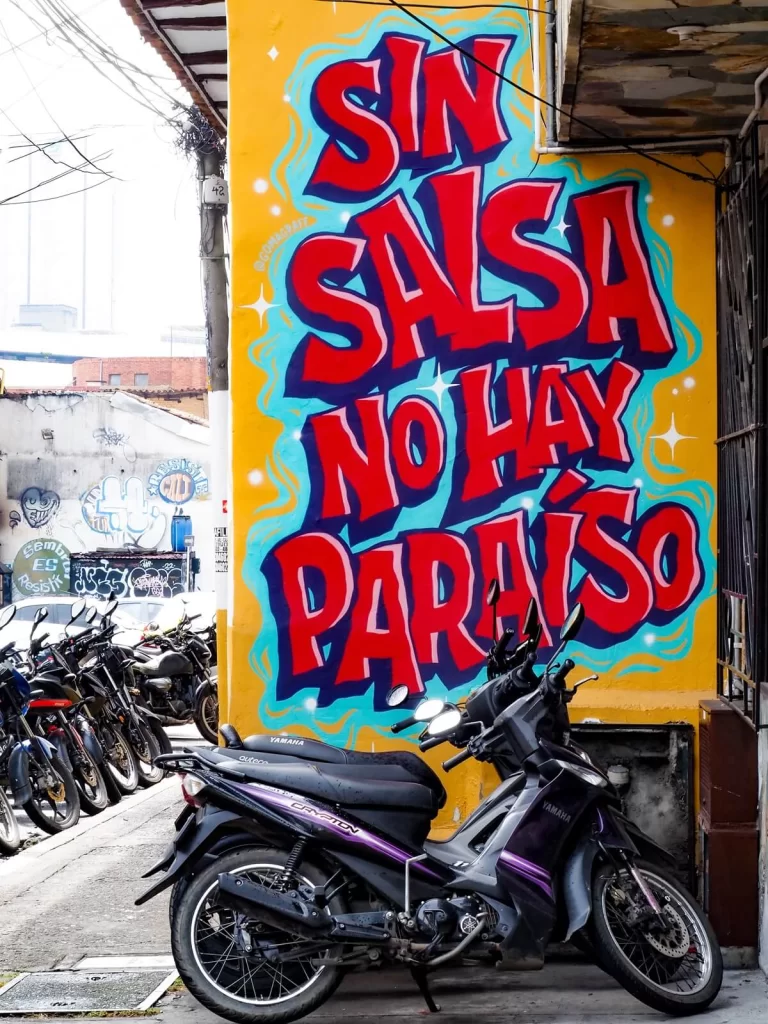
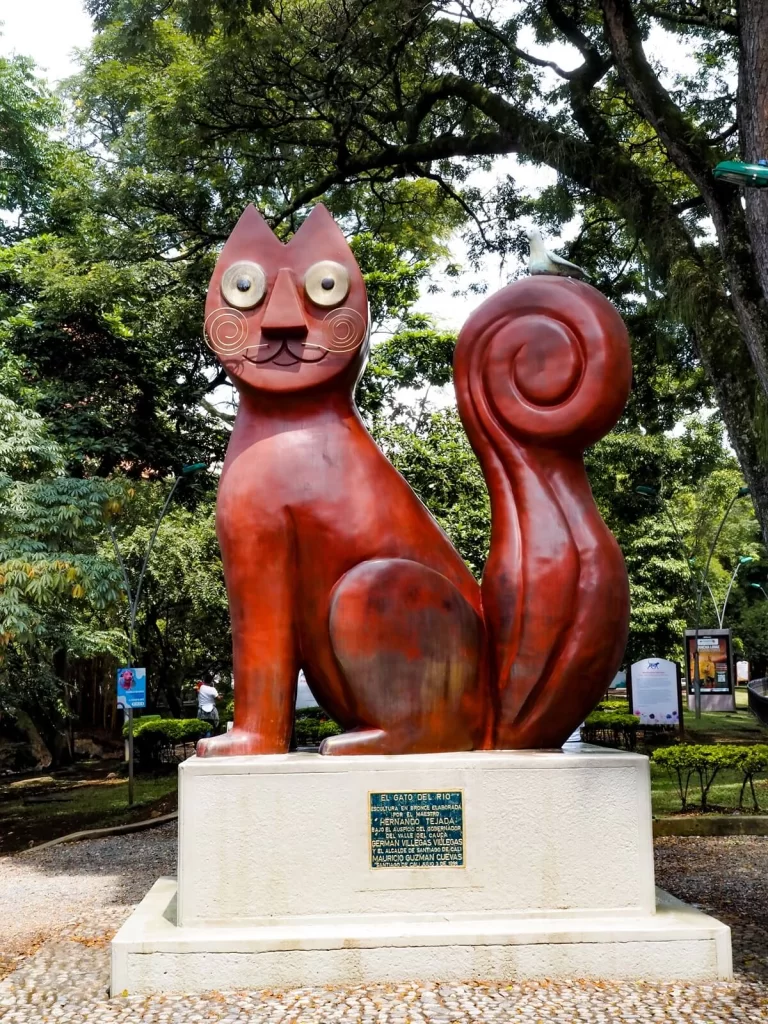
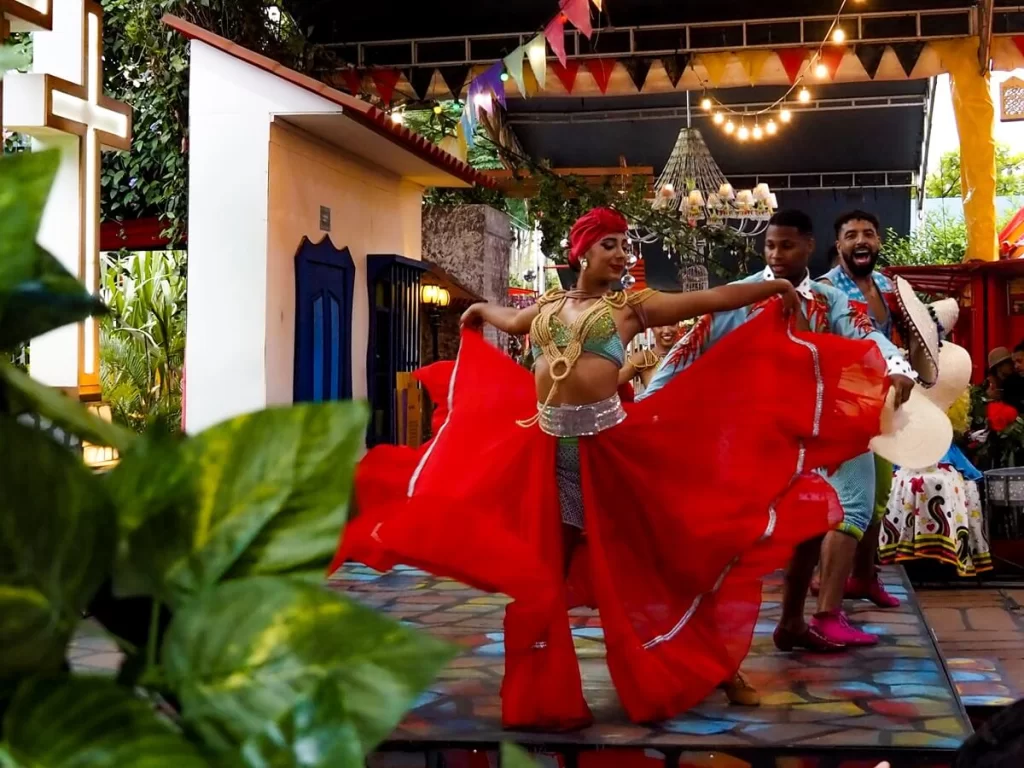
Day 16-18: Cali (Visit the Salsa Capital of the World)
Santiago de Cali, or just simply Cali, isn’t as popular a place to visit in Colombia as Medellin or Cartagena. However, it’s considered the Salsa Capital of the World, which definitely puts Cali on quite a few people’s radar who are looking to have a fantastic cultural experience in the country.
You can get involved with as much salsa as you like in the city. By joining a dedicated salsa tour, you can learn more about its history. You can also watch an incredible salsa show at Delirio, or just attend one of their interactive weekend events. Lastly, signing up for a salsa class will give you the chance to learn some of the moves. Then you can put that into practice at one of the clubs.
There are also many additional things to do in Cali, so we recommend spending around two days in the city. You can wander around the colourful San Antonio neighbourhood, go for a walk along the River Cali, check out some of its beautiful churches, and admire the scenic views.
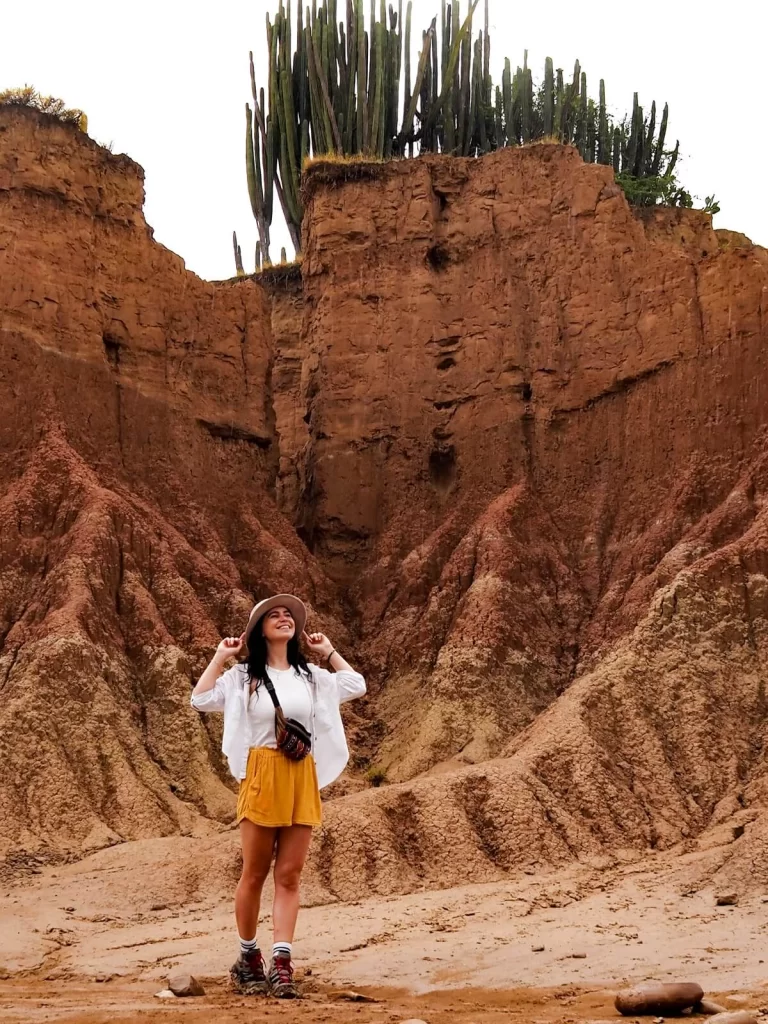

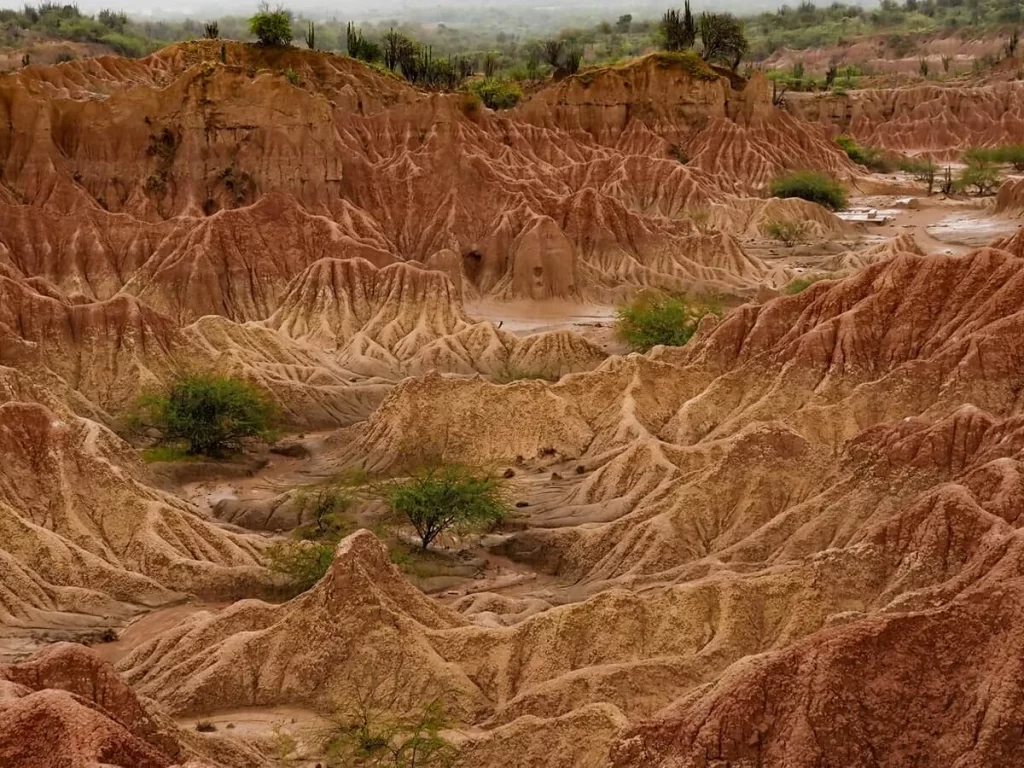
Day 19-20: Tatacoa Desert (Hike in the Red and Grey Deserts)
Although becoming more and more popular, the Tatacoa Desert, or Desierto de la Tatacoa, is still considered a somewhat off the beaten path destination in Colombia. This is because it’s a bit outside of the traditional ‘gringo route’, and therefore can be a bit of a detour. However, if you’re planning on visiting Cali and want to leave the country from Bogota, then we highly recommend adding it to your itinerary.
The Tatacoa Desert is the second largest arid zone in Colombia. Despite its name, it’s actually not a desert but a tropical dry forest. Here, you can hike through an incredible landscape of tiny canyons and unique shapes created by erosion. Tatacoa has two distinct regions: the ocher (or red) coloured Cuzco landscape, and the grey Los Hoyos landscape.
Due to its location, we generally recommend spending at least 2 nights either in the closest town called Villavieja, or inside the Tatacoa Desert itself. If you’re in a hurry, you can normally visit both the Red and the Grey Desert parts of Tatacoa in one day, and can even go on a stargazing event at night.
Read More: A Guide to Visiting the Tatacoa Desert
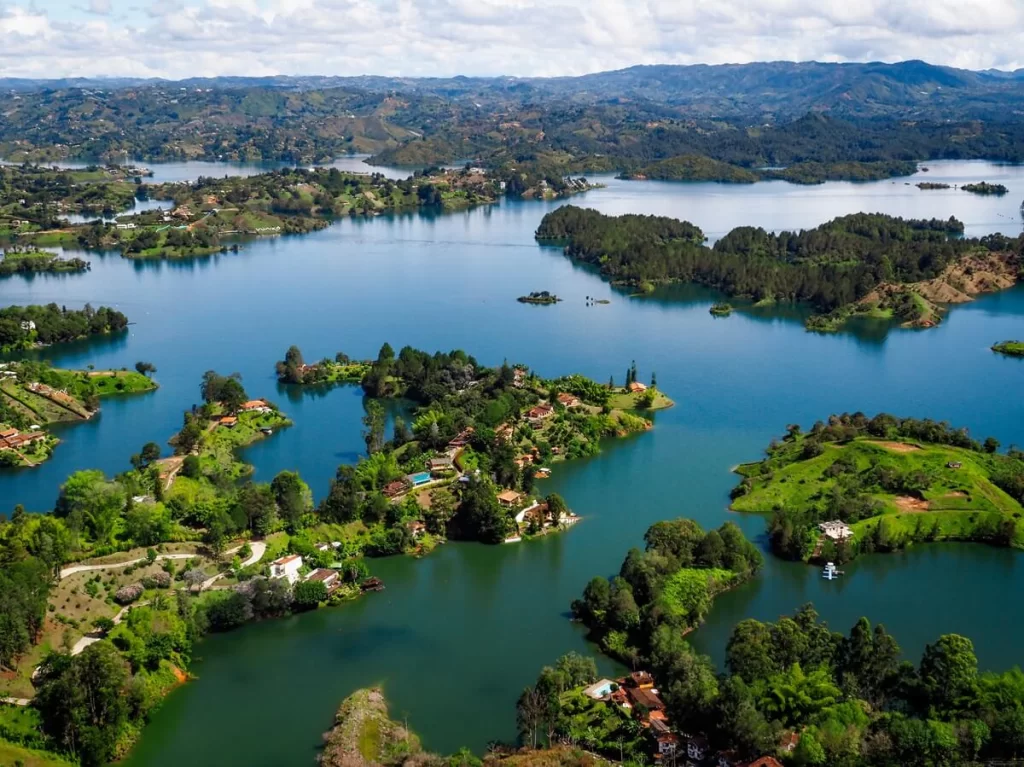
Additional Places to Add to Your 3 Week Colombia Itinerary
Below are some additional places that you might also want to consider when planning out your itinerary.
Do you have 4 weeks to spend in Colombia? If so, then you can also just add these places to account for your longer stay in the country.
Minca
The tiny mountain town of Minca is definitely a nature lover’s paradise. Located to the southeast of Santa Marta, Minca is becoming a popular place to visit in Colombia.
During your stay, you can visit a coffee farm, go bird watching, or take a trip to the Blue Lagoon. You can also go for a swim in the inviting pool in front of the Marinka Waterfall or enjoy the sunset from Sierra Minca.
The Lost City Trek
When it comes to trekking in South America, Colombia is further down the list from countries like Peru and Chile.
However, if you love hiking and are up for a challenge, then you can definitely sign up for Colombia’s most popular multi-day trek: The Lost City Trek.
The ‘Lost City’, or La Ciudad Perdida, is located deep within the jungles of the Sierra Nevada de Santa Marta. The 4 or 5 day trek will take you on the adventure of a lifetime but will include plenty of early alarms, heat, humidity, rivers, mud, and bugs. However, you’ll be trekking through some stunning landscapes. The reward is reaching the ‘Lost City’, an ancient site which is believed to be 650 years older than Machu Picchu.
Palomino
Located to the east of Santa Marta is the beautiful Caribbean beach town of Palomino. If your ideal backpacking trip includes chilling on white sandy beaches in a laidback small town, then Palomino should be on your 3 week Colombia itinerary.
It’s worth noting that it’s not safe to swim in the sea at Palomino Beach thanks to the strong currents. However, when the conditions are right, you can definitely sign up for some surfing lessons. As always, you can also just enjoy some beautiful Caribbean sunsets or go on a tour with a local dog shelter, where you can play with the cute doggies.
San Gil
Known as the Adventure Capital of Colombia, San Gil is a popular spot to visit if you’re after something more adventurous.
Whilst the town itself doesn’t have a lot to do, the surrounding area of lush green valleys, deep canyons and waterfalls are what draw people here. San Gil is a fantastic place if you want to do some paragliding, rafting, or biking. It definitely reminded us of Baños, the adventure capital of Ecuador.
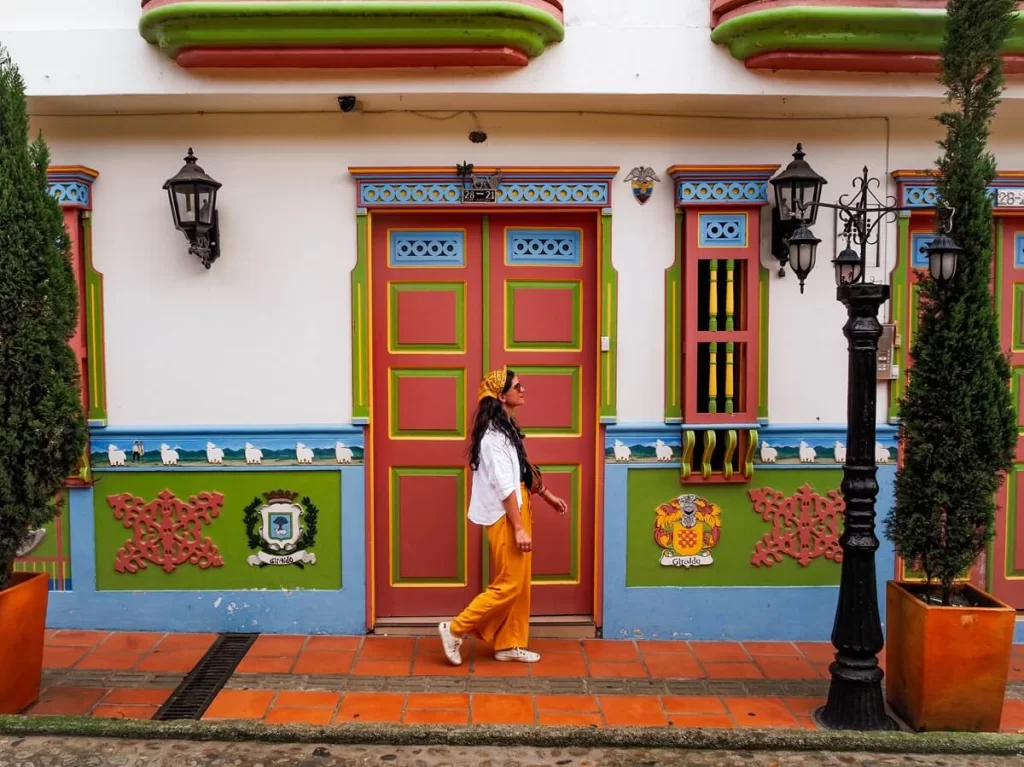
Final Thoughts on 3 Week Colombia Itinerary
Prior to visiting Colombia, we’d heard mixed reviews from fellow travellers. Some people loved it, and others had had negative experiences. We didn’t travel there with high expectations, but overall we really enjoyed our time in the country. Probably our favourite place was Guatape and Piedra del Peñol, but we also loved our visit to the Tatacoa Desert. In terms of cities, we absolutely loved our time in Medellin. However, we also enjoyed Bogota, and think that the capital is definitely underrated.
In hindsight, we would’ve loved to spend an extra night around Guatape to enjoy the beautiful surroundings for a bit longer. Another place we would’ve visited differently is Tayrona National Park. In the future, we would also love to come back and complete the Lost City Trek, because due to the amount of rainfall it was closed around the time we were there.
Have you ever been to Colombia? If so, how much time did you spend in the country and what did you see? If not, would you add Colombia to your South America bucket list? Let us know in the comments below.
Now, let your adventure begin,

Our Top Travel Resources
Accommodation: For hotels we always use Booking.com and Hostelworld for hostels. We also book longer stays on Airbnb or Vrbo.
Flights: To find the best flight prices we always check Skyscanner, Google Flights or WayAway. Then we also check the airlines’ websites too for comparison.
Car Rentals: We use Discover Cars when we want to rent a car as it compares local, national and international companies.
Activities: If we book organised tours we always check either GetYourGuide or Viator.
Foreign Currency: Whenever we can we prefer to pay in local currency and for that we always use our Wise card. We can easily withdraw money from the ATM or pay by card at most shops and restaurants.
Travel Insurance: We never go anywhere without travel insurance. You never know what will happen on your trip, so good travel insurance like SafetyWing can protect you in case of injury, illness, theft and cancellations.
eSIM and VPN: To get data abroad we use Airalo which is an app that allows you to download a prepaid eSIM to your phone in over 190 countries. Make sure to have a VPN to avoid hackers accessing your personal data when using public WIFI. We use Surfshark which is the only VPN that offers one account on unlimited devices.

